Catalogue > Search
Results for : Tout le catalogue

Juliette Bineau
Jour de chasse
| | | 10:19 | France | 0
steve the hunter is walking in the snow. This the first snow. He`s wakes up very early. He kill the time and then, the beast. Who said : " A king without entertaining is a man full of misery" ?
Bineau Juliette is French, she was born in 74. She was an actress before making films. She made Gertrud a remake of the eponymous film Dreyer C th and Head, from Sam Peckinpah. In 2013 she was is Laureat of the artist residency Hors les Murs residence, she works on a project about Robocop, memory of Detroit. (work in prn progress)

Juliette Bineau
LA TÊTE
Experimental fiction | | color | 44:54 | France, Argentina | 2010
Road-trip, Argentine 2009. Un remake de « Apportez-moi le tête d?Alfredo Garcia » de Sam Peckinpah. Alfredo Garcia, l? homme que l?on recherche, est mort. Sa tête est mise à prix. Bennie convaint Elita de le conduire à sa tombe pour decapiter la tête du cadavre. Le couple roule au travers des montagnes arides du nord de l?Argentine, tels des Yankees traversant un purgatoire indien ....
Juliette Bineau Est né en 1974. Elle fait les beaux Arts de Rennes et suit l?enseignement de théâtre de l?auteur scène Didier George Gabily, ce qui la mène à être un temps comédienne et metteur en scène. Elle est aujourd`hui musicienne (batteuse du groupe de free noise psychédélique Minitel)vidéaste et performeuse. Depuis quelques années elle s?intéresse particulièrement au remake comme moyen de revisiter et de s?approprier de grandes formes cinématographiques, de remettre en jeu dans ses films des questions de théâtre (la répétition, l?interprétation d?une ?uvre). Elle réalise « Gertrud » d?après le « Gertrud » de Carl Th. Dreyer. Ce projet a été soutenu par la DRAC Île-de-France (Bourse individuelle à la création 2008) et est montré à la Fémis par le collectif Point Ligne Plan, au centre Culturel de la Récolta de Buenos Aires, au Film Festival de Rotterdam, à la Cinémathèque Française, au Palais de Tokyo? En 2009, elle réalise « La Tête « d?après Apportez-moi la tête de SamPeckinpah : Un road movie argentin, dans le cadre d?une résidence de Cultures-France, avec le concours de l?allocation Image mouvement.
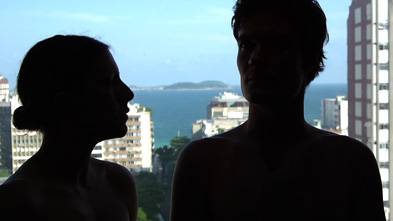
Juliette Bineau
Pleura
0 | 0 | color | 0:0 | France, Brazil | 2011
"God... took one of his "pleura" (rib or side), edified it to make a woman and brought it to adam..." Androgynous and cannibal utopia, "Pleura" declines in the union and the break-up of the lovers. Diptych : 1. In the glass elevator, nowhere in the middle of the outside, going up above an inaccessible garden, a man and a woman are muted with shameful thoughts. 3. They penetrate a seeping forest, it is after the fall, they're covered with mud or painted for a cannibal ritual. Androgynous deflowering, they dance between the branches, they chew a reptilian phallus...
Juliette Bineau was born in 1974. She studied at the Beaux-Arts of Rennes, then with the author - director Didier George Gabily. She's an actress, a performer in noise music bands, a cineast (Gertrud 2009, La Tête 2010, Robocop memory Room 2011). She meets the dancer Cécilia Bengoléa in 2005, during the creation of the music piece of the duo Chaignaud-Begoléa Pâquerette that she accompanies on the (tribal) drums in her band Minitel.


Juliette Bineau
Pleura (Part. 1)
Video | hdv | color | 3:49 | France, Brazil | 2011
"Dieu? prit un de ses "pleura" (côte ou côté), l`édifia pour en faire une femme et l`amena à Adam?". Utopie androgyne et cannibale, Pleura décline en l`union et la séparation des amants. Dans l`ascenseur de verre, nulle part au milieu du dehors, s`élevant au dessus d`un jardin inaccessible, un homme et une femme sont tues de pensées inavouables.
Juliette Bineau Est né en 1974. Elle fait les beaux Arts de Rennes et suit l?enseignement de théâtre de l?auteur scène Didier George Gabily, ce qui la mène à être un temps comédienne et metteur en scène. Elle est aujourd`hui musicienne (batteuse du groupe de free noise psychédélique Minitel)vidéaste et performeuse. Depuis quelques années elle s?intéresse particulièrement au remake comme moyen de revisiter et de s?approprier de grandes formes cinématographiques, de remettre en jeu dans ses films des questions de théâtre (la répétition, l?interprétation d?une ?uvre). Elle réalise « Gertrud » d?après le « Gertrud » de Carl Th. Dreyer. Ce projet a été soutenu par la DRAC Île-de-France (Bourse individuelle à la création 2008) et est montré à la Fémis par le collectif Point Ligne Plan, au centre Culturel de la Récolta de Buenos Aires, au Film Festival de Rotterdam, à la Cinémathèque Française, au Palais de Tokyo? En 2009, elle réalise « La Tête « d?après Apportez-moi la tête de SamPeckinpah : Un road movie argentin, dans le cadre d?une résidence de Cultures-France, avec le concours de l?allocation Image mouvement
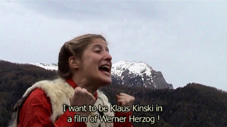

Ines Birkhan, Ines Birkhan
den kreisrunden Todengwalzer tanzen
performance | dv | color | 26:0 | Austria | 2004
In the meadows, in the forests, in the snowfields, on the summits, by the streams dwell and frolic the little people of the Alp mountains and some inflatable orca on his quest for absolute white. A twisted fairy tale with askew words, songs and dances.
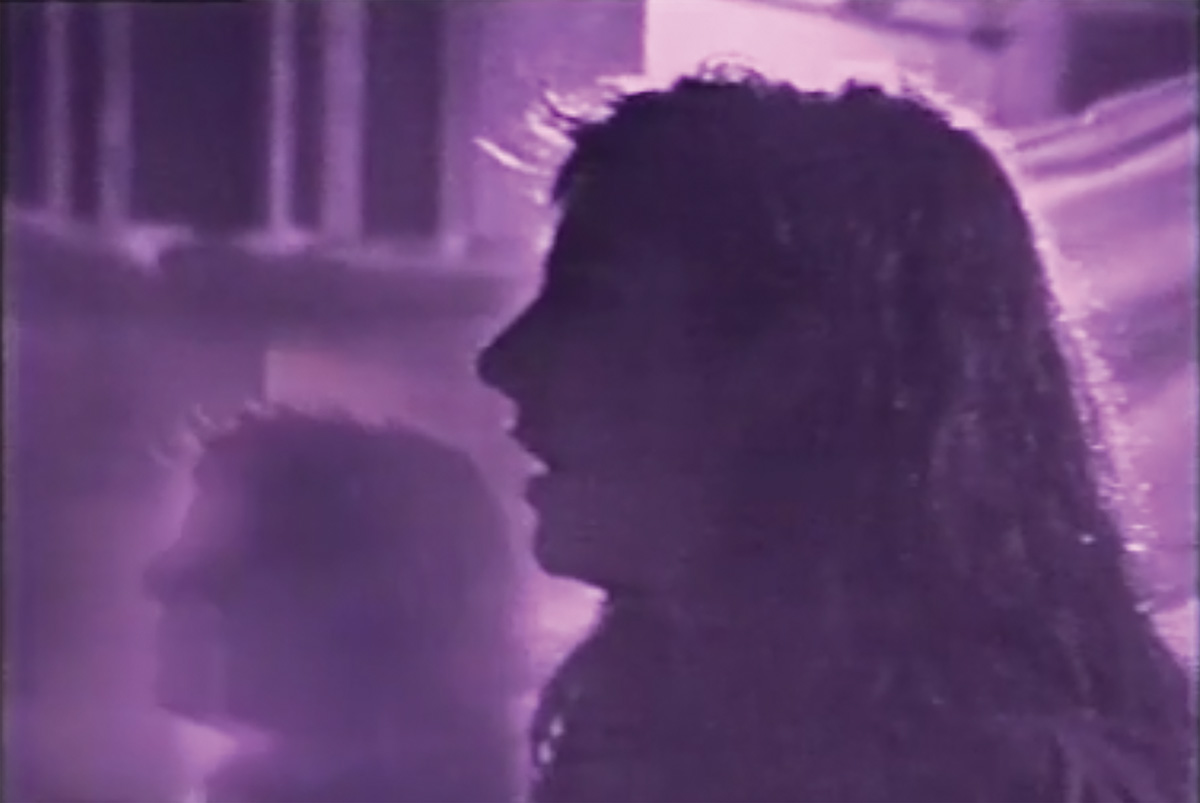

Dara Birnbaum
Canon: Taking to the Streets (Part One: Princeton University – Take Back the Night)
Documentary | 0 | color | 10:0 | USA | 1990
In Canon: Taking to the Streets, Birnbaum breaks with traditional documentary format. Using tools from the low-end and high-end of technology, she episodically views recent events of student activism in the United States. This is a study of the 1987 Take Back the Night march on the Princeton University campus. Birnbaum's treatment of the original student-recorded VHS footage reveals this march as having the potential to develop political awareness through personalized experience. The students attempt to "put across a historical message" that was started in San Francisco in 1978: the protest of any form of violence against women. Take Back the Night now represents men and women, in solidarity with one another, marching against sexual violence of any kind. Here the activity remains specific to violence as perpetrated against persons in the Princeton community.
For four decades, Dara Birnbaum's pioneering works in video, media and installation have questioned the ideological and aesthetic character of mass media imagery, and are considered fundamental to our understanding of the history of media practices and contemporary art. Dara Birnbaum was born in New York City in 1946 where she continues to live and work. Dara Birnbaum received a B.A. in architecture from Carnegie Mellon University in Pittsburgh, a B.F.A. in painting from the San Francisco Art Institute, and a certificate in video and electronic editing from the Video Study Center at the New School for Social Research in New York. Dara Birnbaum was one of the first artists to develop complex and innovative installations that juxtapose images from multiple sources while incorporating three-dimensional elements - large-scale photographs, sculptural or architectural elements - into the work. She is known for her innovative strategies and use of manipulated television footage. Birnbaum's work has been exhibited widely at MoMA PS1, New York (2019); National Portrait Gallery, London (2018); Cleveland Museum of Art, Ohio (2018); South London Gallery, UK (2011); major retrospectives at Serralves Foundation, Porto, Portugal (2010) and S. M.A.K. Stedelijk Museum voor Actuele Kunst, Ghent, Belgium (2009); Center for Contemporary Art, CCA Kitakyushu (2009); Museum of Modern Art, New York (2008); Kunsthalle Wien, Vienna, Austria (2006); and The Jewish Museum, New York (2003). His work has been exhibited at Documenta 7, 8 and 9. Birnbaum has won several prestigious awards including: John Simon Guggenheim Memorial Foundation Fellowship (2021); The Rockefeller Foundation Bellagio Center Arts Residency (2011); the Pollock-Krasner Foundation Grant (2011); and the prestigious United States Artists Fellowship (2010). In 2016, she was recognized and honored for her work by The Kitchen, New York, at their annual gala. She was the first woman in video to receive the prestigious Maya Deren Award from the American Film Institute in 1987. In February 2017, Carnegie Mellon University's School of Art established the Birnbaum Award in her honour.
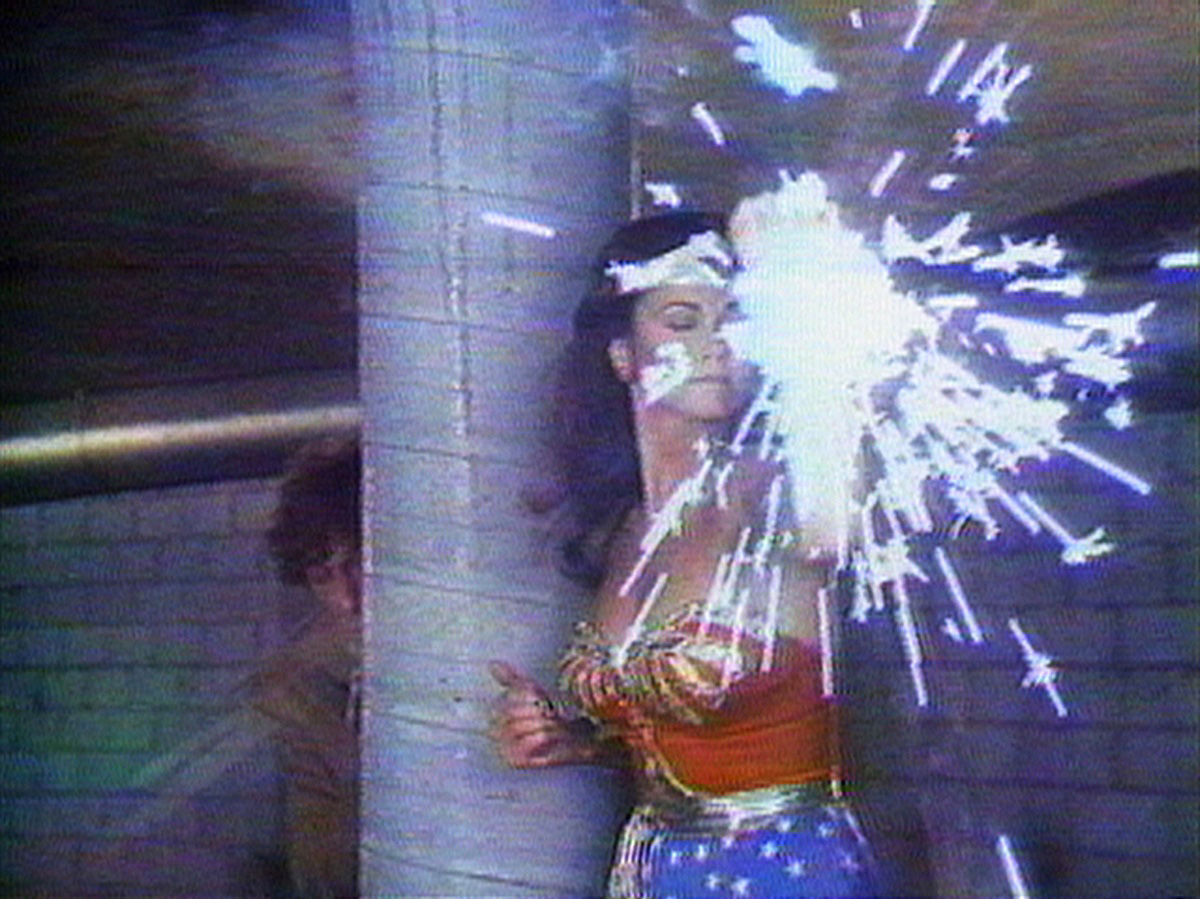

Dara Birnbaum
Technology/Transformation: Wonder Woman
Video | 0 | color | 5:50 | USA | 1979
Explosive bursts of fire open Technology/Transformation, an incendiary deconstruction of the ideology embedded in television form and pop cultural iconography. Appropriating imagery from the 1970s TV series Wonder Woman, Birnbaum isolates and repeats the moment of the "real" woman's symbolic transformation into super-hero. Entrapped in her magical metamorphosis by Birnbaum's stuttering edits, Wonder Woman spins dizzily like a music-box doll. Through radical manipulation of this female Pop icon, she subverts its meaning within the television text. Arresting the flow of images through fragmentation and repetition, Birnbaum condenses the comic-book narrative — Wonder Woman deflects bullets off her bracelets, "cuts" her throat in a hall of mirrors — distilling its essence to allow the subtext to emerge. In a further textual deconstruction, she spells out the words to the song Wonder Woman in Discoland on the screen. The lyrics' double entendres ("Get us out from under... Wonder Woman") reveal the sexual source of the superwoman's supposed empowerment: "Shake thy Wonder Maker." Writing about the "stutter-step progression of 'extended moments' of transformation from Wonder Woman," Birnbaum states, "The abbreviated narrative — running, spinning, saving a man — allows the underlying theme to surface: psychological transformation versus television product. Real becomes Wonder in order to "do good" (be moral) in an (a) or (im)moral society."
For four decades, Dara Birnbaum's pioneering works in video, media and installation have questioned the ideological and aesthetic character of mass media imagery, and are considered fundamental to our understanding of the history of media practices and contemporary art. Dara Birnbaum was born in New York City in 1946 where she continues to live and work. Dara Birnbaum received a B.A. in architecture from Carnegie Mellon University in Pittsburgh, a B.F.A. in painting from the San Francisco Art Institute, and a certificate in video and electronic editing from the Video Study Center at the New School for Social Research in New York. Dara Birnbaum was one of the first artists to develop complex and innovative installations that juxtapose images from multiple sources while incorporating three-dimensional elements - large-scale photographs, sculptural or architectural elements - into the work. She is known for her innovative strategies and use of manipulated television footage. Birnbaum's work has been exhibited widely at MoMA PS1, New York (2019); National Portrait Gallery, London (2018); Cleveland Museum of Art, Ohio (2018); South London Gallery, UK (2011); major retrospectives at Serralves Foundation, Porto, Portugal (2010) and S. M.A.K. Stedelijk Museum voor Actuele Kunst, Ghent, Belgium (2009); Center for Contemporary Art, CCA Kitakyushu (2009); Museum of Modern Art, New York (2008); Kunsthalle Wien, Vienna, Austria (2006); and The Jewish Museum, New York (2003). His work has been exhibited at Documenta 7, 8 and 9. Birnbaum has won several prestigious awards including: John Simon Guggenheim Memorial Foundation Fellowship (2021); The Rockefeller Foundation Bellagio Center Arts Residency (2011); the Pollock-Krasner Foundation Grant (2011); and the prestigious United States Artists Fellowship (2010). In 2016, she was recognized and honored for her work by The Kitchen, New York, at their annual gala. She was the first woman in video to receive the prestigious Maya Deren Award from the American Film Institute in 1987. In February 2017, Carnegie Mellon University's School of Art established the Birnbaum Award in her honour.


Dara Birnbaum
Kiss the Girls: Make Them Cry
Video | 0 | color | 6:26 | USA | 1979
Birnbaum manipulates off-air imagery from the TV game show Hollywood Squares in Kiss The Girls: Make Them Cry, a bold deconstruction of the gestures of sexual representation in pop cultural imagery and music. Minor celebrities (who Birnbaum terms "iconic women and receding men") confined in a flashing tic-tac-toe board greet millions of TV viewers, animating themselves as they say "hello." Birnbaum isolates and repeats these banal and at times bizarre gestures of male and female presentation — "repetitive baroque neck-snapping triple takes, guffaws, and paranoid eye darts" — wrenching them from their television context to expose stereotyped gestures of power and submission. Linking TV and Top 40, Birnbaum spells out the lyrics to disco songs ("Georgie Porgie puddin' and pie/kissed the girls and made them cry") with on-screen text, as the sound provides originally scored jazz interpolation and a harsh new wave coda. The result is a powerful, layered analysis of the meaning of the gestures of mass cultural idioms.
For four decades, Dara Birnbaum's pioneering works in video, media and installation have questioned the ideological and aesthetic character of mass media imagery, and are considered fundamental to our understanding of the history of media practices and contemporary art. Dara Birnbaum was born in New York City in 1946 where she continues to live and work. Dara Birnbaum received a B.A. in architecture from Carnegie Mellon University in Pittsburgh, a B.F.A. in painting from the San Francisco Art Institute, and a certificate in video and electronic editing from the Video Study Center at the New School for Social Research in New York. Dara Birnbaum was one of the first artists to develop complex and innovative installations that juxtapose images from multiple sources while incorporating three-dimensional elements - large-scale photographs, sculptural or architectural elements - into the work. She is known for her innovative strategies and use of manipulated television footage. Birnbaum's work has been exhibited widely at MoMA PS1, New York (2019); National Portrait Gallery, London (2018); Cleveland Museum of Art, Ohio (2018); South London Gallery, UK (2011); major retrospectives at Serralves Foundation, Porto, Portugal (2010) and S. M.A.K. Stedelijk Museum voor Actuele Kunst, Ghent, Belgium (2009); Center for Contemporary Art, CCA Kitakyushu (2009); Museum of Modern Art, New York (2008); Kunsthalle Wien, Vienna, Austria (2006); and The Jewish Museum, New York (2003). His work has been exhibited at Documenta 7, 8 and 9. Birnbaum has won several prestigious awards including: John Simon Guggenheim Memorial Foundation Fellowship (2021); The Rockefeller Foundation Bellagio Center Arts Residency (2011); the Pollock-Krasner Foundation Grant (2011); and the prestigious United States Artists Fellowship (2010). In 2016, she was recognized and honored for her work by The Kitchen, New York, at their annual gala. She was the first woman in video to receive the prestigious Maya Deren Award from the American Film Institute in 1987. In February 2017, Carnegie Mellon University's School of Art established the Birnbaum Award in her honour.


Dara Birnbaum
Fire!/Hendrix
Video | 0 | color | 3:13 | USA | 1982
Commissioned by VideoGram International, Ltd., for a videodisc of music by Jimi Hendrix, Fire! uses the stylized visuals and pacing of a music video to critique the representational economies of sexuality and consumerism. Translating the psychedelic fervor of the Hendrix song into a contemporary visual vernacular, Birnbaum similarly recasts the lyrics' meaning. A young woman is the "protagonist" of a fragmented narrative in which Birnbaum re-frames images of American consumerism and commodities — fast food, cars, the exchange of money. Birnbaum calls attention to the woman's relation to the advertising image: she is consumed as she is consuming.
For four decades, Dara Birnbaum's pioneering works in video, media and installation have questioned the ideological and aesthetic character of mass media imagery, and are considered fundamental to our understanding of the history of media practices and contemporary art. Dara Birnbaum was born in New York City in 1946 where she continues to live and work. Dara Birnbaum received a B.A. in architecture from Carnegie Mellon University in Pittsburgh, a B.F.A. in painting from the San Francisco Art Institute, and a certificate in video and electronic editing from the Video Study Center at the New School for Social Research in New York. Dara Birnbaum was one of the first artists to develop complex and innovative installations that juxtapose images from multiple sources while incorporating three-dimensional elements - large-scale photographs, sculptural or architectural elements - into the work. She is known for her innovative strategies and use of manipulated television footage. Birnbaum's work has been exhibited widely at MoMA PS1, New York (2019); National Portrait Gallery, London (2018); Cleveland Museum of Art, Ohio (2018); South London Gallery, UK (2011); major retrospectives at Serralves Foundation, Porto, Portugal (2010) and S. M.A.K. Stedelijk Museum voor Actuele Kunst, Ghent, Belgium (2009); Center for Contemporary Art, CCA Kitakyushu (2009); Museum of Modern Art, New York (2008); Kunsthalle Wien, Vienna, Austria (2006); and The Jewish Museum, New York (2003). His work has been exhibited at Documenta 7, 8 and 9. Birnbaum has won several prestigious awards including: John Simon Guggenheim Memorial Foundation Fellowship (2021); The Rockefeller Foundation Bellagio Center Arts Residency (2011); the Pollock-Krasner Foundation Grant (2011); and the prestigious United States Artists Fellowship (2010). In 2016, she was recognized and honored for her work by The Kitchen, New York, at their annual gala. She was the first woman in video to receive the prestigious Maya Deren Award from the American Film Institute in 1987. In February 2017, Carnegie Mellon University's School of Art established the Birnbaum Award in her honour.

José Miguel Biscaya
Neuland
Video | dv | color | 7:22 | Portugal, Netherlands | 2009
Neuland - 7min 22sec - 4:3 - dv_pal - 2009 A dutch landscape. The video-work `Neuland` (Virgin Soil, Unknown Territory) belongs to a series of landscape studies. The definition of the `Argument` and the `By-work` is questioned. It remains unclear if the `Argument` refers to the subject aimed by the camera or the one passing by. The attention is turned to an artificial landscape which stands for modernity and progress. Routine reveals itself as mechanical ritual. Seen from this perspective there is no place for the individual.
Biography José Miguel Biscaya, born in Lisbon in 1973, is a Mixed-Media Artist and Curator living and working in Amsterdam. He graduated at the Sandberg Institute where he received his Master-degree in Fine Arts (MFA). His work has been shown in numerous international festivals and group-exhibitions. He co-curated and produced several shows, including Volume and Hiscox Art Award. In 2007, he created in association with Jonathan Sullam and Tom Hillewaere the Mobile Institute in Brussels. As a jury member of the Media Art Friesland commission in 2009, José co-curated and lined up the Friesland International Media Art Competition program. Currently he is working on a new series of video-works.


Rossella Biscotti, Kevin VAN BRAAK
New Crossroads
Experimental doc. | dv | color | 21:11 | Italy, Netherlands | 2006
A selection of inhabitants from the township New Crossroads (Cape Town), attempt to change the location with a not functional working intervention. In a public field, they build a tower of 5 meters by stacking beams of wood, painted in a vivid green. When the structure is at its highest point, other residents are invited to come and dismantle it, to take the materials to use for their own purposes. The ?tower? finds its meaning only after it is taken down and fragmented. The image of the tower like a unique symbol and reference point of the township fades away in the horizontality of the neighborhood.
The collaboration between the two artists Rossella Biscotti (Molfetta, Italy, 1978) and Kevin van Braak (Warnsveld, The Netherlands, 1975) started with the project in the township of New Crossroads in Cape Town (South Africa). It is based on their common interest for the exiting relationship between the real, pure or idealist environment and the fictional, man-created context inside of the contemporary society. In their work these aspects come together. The collaboration started with the movie New Crossroads filmed in a township in Cape Town (South Africa). They worked together in different projects involving photography, installations and sculpture. In 2006 they directed a second movie, The renovation of the empty bath, about a renovation of a swimming pool in Rome, built during the fascist period. Together they have exhibited in the Fonds BKVB in Amsterdam (NL), in the American Academy in Rome and in Fondazione Adriano Olivetti in Roma (IT). As independent artists they have exhibited also in different galleries and museums.
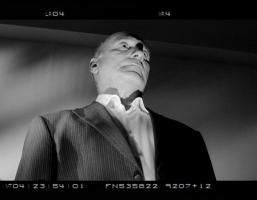

Rossella Biscotti
The Undercover Man
Experimental film | 16mm | black and white | 30:0 | Italy, USA | 2008
Inside a 1940?s film-noir set the FBI agent Joseph D. Pistone a.k.a. Donnie Brasco is questioned by the artist about his six years long undercover operation inside the American Mafia (1976-1982). Pistone was the first FBI agent able to infiltrate the New York mafia and report ?inside? information back to the FBI. His undercover role was so convincing that he was able both to involve some of the mafia members with criminal activities that were entirely set up by the FBI (The King?s Court Bottle Club) and also to introduce other FBI agents as ?criminal partners?. He created a complete fictional context that acted as a trap for the Mafia. In The Undercover Man, Joseph D. Pistone is not only a character but a living memory, the only person that knows what happened and contains all the information. Cinema, with all its devices of form and construction, is used as a reference point for what is real. The film is shoot in a specially designed and constructed film-set that revisit the noir aesthetic from the 1940s. The myth of the underworld, the double face of reality (dark and light, investigator and investigated) connects the story by Joseph D. Pistone both with the history of gangsters and with our knowledge of it given by the American cinema.
Rossella Biscotti (Molfetta, Italy, 1978; lives and works in Rotterdam, Holland) is famous for her videos regarding the traces of lives of others, that are usually anonymous in history. They are sources that stimulate a reflection on the situation of (collective and personal) identity and memory, in present time. Her recent exhibitions include the solo shows: The Undercover Man, Wilfried Lentz Rotterdam (NL); You have to be focused, prometeogallery, former church of San Matteo, Lucca (IT); Everything is somehow related? site-specific project for Museion in Bolzano (IT) in 2008. Group shows: Cabinet of imagination, Netwerk, Aalst (BE); Peripheral vision and collective body, Museion, Bolzano (IT); Dai tempo al tempo, Fondazione Sandretto Re Rebaudengo, Torino (IT) in 2008; Looking for the Border, De Garage, Mechelen / Cultuurcentrum Strombeek (BE); Premio NY, Italian Academy at Columbia Univesity, NY, (USA); Nessuna paura, Centre for Contemporary Art Luigi Pecci, Prato (IT); Work_show in progress, Galleria Civica di Trento (IT) in 2007; Sense and Sensitivity, TENT Rotterdam Center for the Arts, Rotterdam (NL) in 2006; Adam, Smart Project Space, Amsterdam (NL) in 2005. In 2007 her video The Sun Shines in Kiev won The City of Geneva Grand Prize at the 12th Biennial of Moving Images, Centre pour l?image contemporain, Geneva (Switzerland), and the Golden Cow at Gstaadfilm, Gstaad (Switzerland).


Jules Bishop
Pay & display
Fiction | 35mm | color | 12:0 | United Kingdom | 2004
Interweaving stories inside a multi-storey car park.

Christophe Bisson
Silêncio
Documentary | 4k | color | 56:0 | France | 2016
Far from their former reality, in an ancient now deserted palace, a group of men and women share their life stories and explain how they survived, living and sleeping in the streets of Porto.
A former painter and visual artist, Christophe Bisson co-directs his first film, White Horse, with Maryann De Leo in 2007. The documentary is nominated for a GoldenBear at the Berlinale and broadcasted on the American TV Channel HBO. Since then, Christophe Bisson has directed more than 15 films, either documentaries or art videos, often based on literary texts (Isaie, Feast of Crispian, etc.) , or on the question of norms, pathologies and solitude (Road Movie, Into the World, Liquidation, Sfumato). Produced by Triptyque Films since 2013, his documentaries have had increasing success over the years and his work is now selected in the most prestigious French and international film festivals such as the Viennale, Cinéma du Réel (Paris), FID Marseille, Karlovy Vary International Film Festival, etc. His latest documentary, Silêncio , has received one of the main prizes of the FIDLab 2015 and won the « Prix des Lycéens » at the 2016 edition of FID Marseille. He is now working on a new project at the Villa Medicis in Rome (Italy).

Hisham Bizri
A Film
Experimental film | 16mm | black and white | 8:32 | Lebanon, USA | 2010
This is a film poem about love. A Lebanese-American filmmaker photographs a woman in Paris: as a trapeze artist, a model, a lover, and a child. The film attempts to capture that moment between wakefulness and dream. It carries within it melancholy and loneliness, sadness and joy, adulthood and childhood. It evolves out of the metaphor that life is a circular journey whose end is "to arrive where we started / And know that place for the first time" (T.S. Eliot, Little Gidding).
Hisham Bizri is a Lebanese-American filmmaker born in Beirut. He has made several short films and has had retrospectives and screenings at Anthology Film Archives and MOMA in NYC, Centre Georges Pompidou and the Cinémathèque Française (Paris), Cairo Opera House (Egypt), among others. He has worked with Raùl Ruiz and Miklós Jancsó and was a jury member at several international film festivals, including the Chicago International Film Festival. Hisham has won several awards such as the Guggenheim and the American Academy Rome Prize. He is currently working on his feature "Until Morning" with producer Andrew Fierberg.
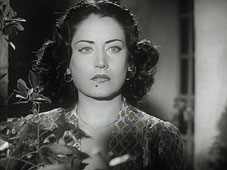

Hisham Bizri
Asmahan
Experimental film | 35mm | black and white | 21:20 | Lebanon | 2005
Asmahan is a visual and cinematic meditation with an avant-garde motif. Based on Asmahan's, (the Syrian/Egyptian singer 1912 - 1944), last film "Gharam Wa Intiqam" (Passion and Revenge, 1944), the film's cinematic form merges her songs with plot and actions to reveal an insight into the relationship between the star's tragic life, colonial Egypt, and the nature of cinema.
Hisham is a filmmaker from Lebanon. He has studied in the US with filmmakers Raoul Ruiz and Miklós Jancsó and lectured on filmmaking in the US, Lebanon, Ireland, Korea, France, and Japan. Much of his work may be viewed as meditations on the themes of exile and melancholy. These visual meditations are shaped by his personal experience of interceding between the Middle East of his Arab-Muslim upbringing and Anglo/European art and culture. Emerging from this personal context, his work reflects political and social concerns with contemporary Arab politics and culture and aesthetic concerns with painterly values and the poetics of modern life. His work has been shown in the Arab world and internationally, including at the Louvre (France), Cairo Opera House (Egypt), Biennale Des Cinema Arabes (Paris, France), Milan Film Festival (Italy), Walker Art Center (Minneapolis), Institut du Monde Arabe (Paris), Harvard Film Archives (Cambridge), and the Museum of Modern Art (New York), among others.
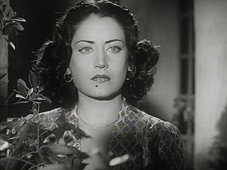

Hisham Bizri
Asmahan
Experimental film | 35mm | black and white | 20:0 | Lebanon | 2005
Asmahan is the story of a woman who takes revenge on the man she thinks killed her husband, but falls in love with him in the process. During the filming, the actress in the film who sings the two beautiful songs on the soundtrack, dies in a car accident and the ending had to be changed so that her character would die also. Asmahan is a real person who was the quintessential figure of sin and freedom to the women in the Arab world. She left her home and husband in Syria in the 1930?s to pursue fame in Egypt. She was murdered in 1944 and her murder remains a mystery for she was believed to be a double agent, working for the British and Egyptian governments. Asmahan?s life was shrouded in myth and intrigue and several stories about her modern attitude towards life, her smoking and drinking, and her romantic liaisons continue to generate the aura around her even after her death. My film shows her aura through a cinematic language inspired by her music and life.
Hisham is a filmmaker from Lebanon. He has studied in the US with filmmakers Raoul Ruiz and Miklós Jancsó and lectured on filmmaking in the US, Lebanon, Ireland, Korea, France, and Japan. Much of his work may be viewed as meditations on the themes of exile and melancholy. These visual meditations are shaped by his personal experience of interceding between the Middle East of my Arab-Muslim upbringing and Anglo/European art and culture. Emerging from this personal context, his work reflects political and social concerns with contemporary Arab politics and culture and aesthetic concerns with painterly values and the poetics of modern life. His work has been shown in the Arab world and internationally, including Louvre museum (France), Biennale Des Cinema Arabes (Paris, France), Milan Film Festival (Italy), Walker Art Center (Minneapolis), Institut du Monde Arabe (Paris), Museum of Modern Art (New York), among others.
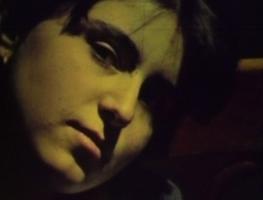

Hisham Bizri
Song for the Deaf Ear
Experimental film | 16mm | color and b&w | 17:0 | Lebanon | 2008
"Song for the Deaf Ear" is a film meditation on the insanity of war and violence in my country, Lebanon.
Hisham is a Lebanese filmmaker. He studies in the US with filmmakers Raoul Ruiz and Miklos Jancso and has lectured on film in the US, Lebanon, Ireland, Korea, France and in Japan. A big part of his work can be considered a meditation on the themes of exile and melancholy. His work has been shown throughout the Arab world and internationally, most notably at the Louvre Museum in Paris, the Arab Film Biennale in Paris, the Milan Film Festival, the Walker Art Center in Minneapolis, the Institute of Arab World in Paris, the Harvard Film Archives in Cambridge, the Reina Sofia in Madrid, the Museum of Modern Art in New York, the French Cinematheque in Paris, the Pompidou Center in Paris, and the Caire Opera amongst others.

Ingrid Bjørnaali, Maria Simmons, Fabian Lanzmaier
Land Bodies, Decomposing Mass
Video installation | hdv | color | 22:16 | Norway | 2023
Land Bodies, Decomposing Mass is an audiovisual collaboration between Ingrid Bjørnaali, Maria Simmons and Fabian Lanzmaier, focusing on preserved peatlands and their interpretation through various recording and 3D computing technologies. Through the use of photogrammetry, a technology that relates to satellite mapping and archiving of anthropocentric spaces and monuments, the biotope is interpreted bit by bit in an intimate, close-up interaction. The work explores specific peatlands in Finland, Norway and Canada from various perspectives, focusing on the idea of natural landscapes as sources as opposed to resources, and their capability or not to be translated to binary code.
Ingrid Bjørnaali is a multidisciplinary artist based in Oslo who records specific biotopes in various states of their ongoing world-building processes. Her works explore the omnipresence of the digital in our experience of the world as well as the inability of technology to articulate matter’s complexity. Recent exhibitions include Screen City Biennial, Berlin, Fabbrica Del Vapore, Milan, Charles Street Video, Toronto and Contemporary Art Museum of Estonia (EKKM). Fabian Lanzmaier is a musician and sound artist living in Vienna. In his practice he explores perception and ideas of natural / artificial sounds, fluid and ambiguous environments. He works with real-time audio synthesis utilizing digital/analog physical modeling techniques and feedback networks to explore aspects of texture and structure of sound as well as its presence within space. Recent projects include: Artist in Residency at Wave Farm – NY, composition commission through INA - grm - Paris, AV - Performance at Fridman Gallery - NYC and Artist in Residency at EMS – Stockholm. Maria Simmons is a Canadian symbiontic artist who investigates potentialized environments through the creation of hybrid sculptures and installations. Her work embraces contamination as an act of collaboration. She collects garbage, grows yeast, ferments plants, and nurtures fruit flies. She makes art that eats itself. Recent solo exhibitions include the Visual Art Centre of Clarington, Trinity Square Video, and Centre3.

Mario Blaconà
La presa del Palazzo d'Inverno
Documentary | 16mm | black and white | 20:0 | Italy | 2023
A journey through the years of counterculture and attempted revolution, through archive footage, guided by the memory of a retired revolutionary, Vittorio Alfieri, former head of the Milanese column of the Red Brigades. From factory initiatives, through armed struggle and half a life in prison, a glimpse of a forgotten history, which we still keep hidden, especially from ourselves.
Mario Blaconà is a cinema programmer at the San Fedele Cultural Center in Milan and is editor of the online magazines Lo Specchio Scuro and Filmidee. In 2018 he directed the documentary short film Which of you was not born here, winner of the Montelupo Fiorentino Film Festival, and in the same year he arrived among the finalists of the Solinas Award for documentary with the project Benq5, with which he won the Front Lab Aosta 2018 and participated in the international laboratory Balkan Documentary Center. In 2021 he directed the medium-length documentary Italia, theories for a home movie, with which he participated in the Milan Filmmaker Festival and in FIDBA at Buenos Aires. In 2022 he partecipated to the artistic residency U Stories with the project Domina. He is currently head programmer of the Bellaria Film Festival, is a member of the Sole Luna Doc pre-selection committee and collaborates with the Locarno Film Festival within the Locarno Filmmakers Academy and L'immagine e la Parola.
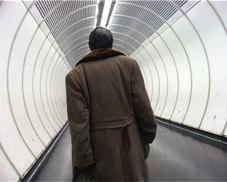

Maija Blafield
Maailmaa pelastamassa
Documentary | betaSP | color | 54:48 | Finland | 2005